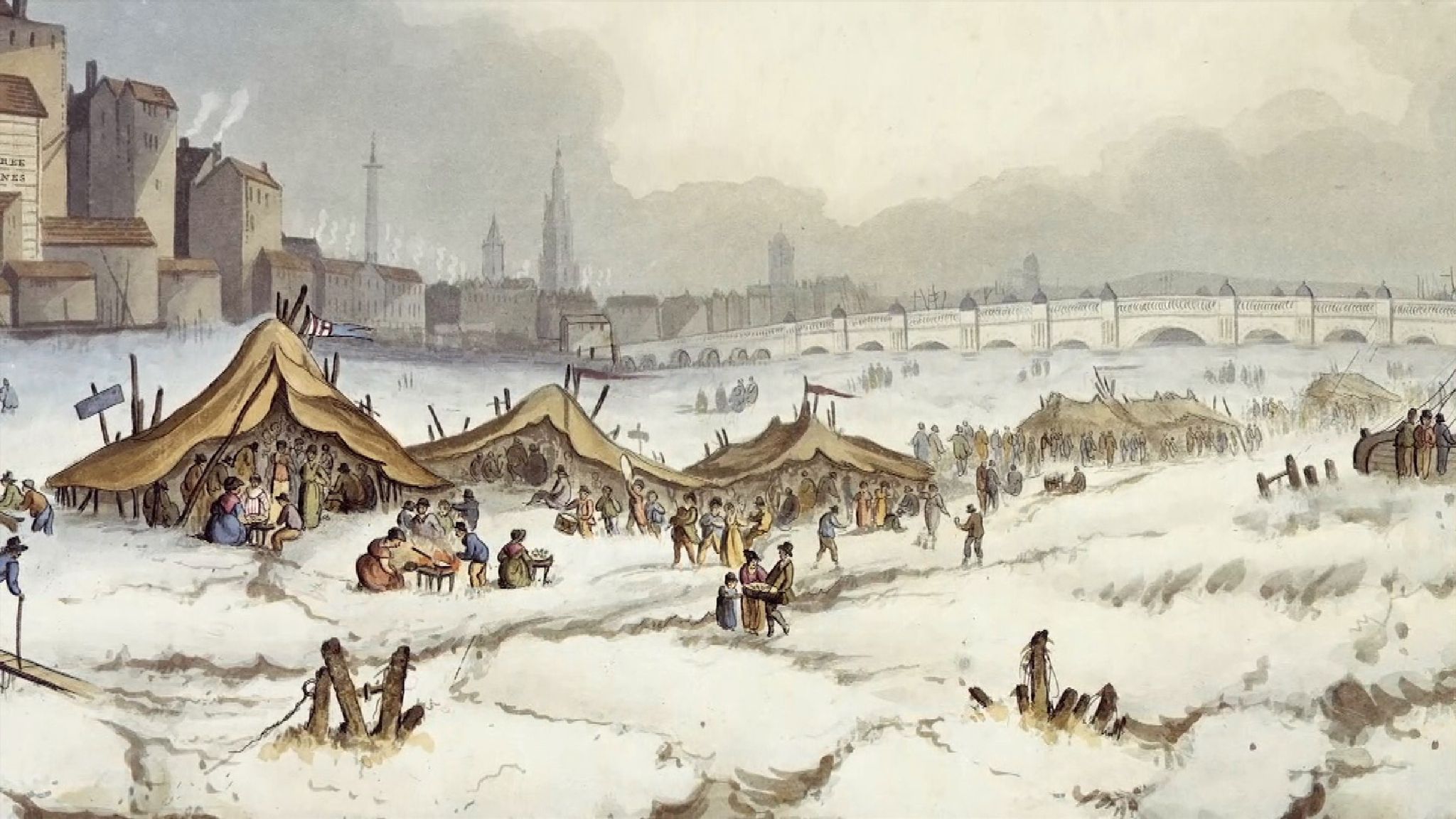About Little Ice Age (LIA)
- It was one of the coldest periods of the past 10,000 years, a period of cooling that was particularly pronounced in the North Atlantic region.
- It was a global climatic event, between CE 1671-1942
- The Little Ice Age followed the Medieval Warming Period (roughly 900–1300 CE) and preceded the present period of warming that began in the late 19th and early 20th centuries.
- Impact on climate:
- It is best known for its effects in Europe and the North Atlantic region.
- Alpine glaciers advanced far below their previous (and present) limits, obliterating farms, churches, and villages in Switzerland, France, and elsewhere.
- Frequent cold winters and cool, wet summers led to crop failures and famines over much of northern and central Europe. In addition, the North Atlantic cod fisheries declined as ocean temperatures fell in the 17th century.
Key findings of the study
- It showed significant variations of rainfall patterns during that age, challenging the conventional notion of a uniformly cold and dry climate with reduced monsoon rainfall during the LIA.
- It suggested that northward movement of the Inter Tropical Convergence Zone (ITCZ), positive temperature anomalies, increased sunspot numbers and high solar activity could be driving the climate change and increased South West Mansoon.
- They attributed the weakest phase of the Indian Summer Monsoon (ISM) across the Indian subcontinent during the LIA, in general, to the southward shift of the ITCZ, resulting from increased northward energy flux across the equator, during a cold northern hemisphere.
- The high-resolution palaeoclimatic records generated in the present study could be helpful in developing paleoclimatic models for future climatic predictions and also for a scientifically sound policy planning.
- Knowledge and understanding of the climate change and the Indian Summer Monsoon (ISM) variability during the Holocene could be of immense interest to strengthen the understanding of the present ISM-influenced climatic conditions, as well as of possible future climatic trends and projections.
Q1) What are Temperature anomalies?
It refers to deviations or variations in temperature from a reference point or baseline. They are often used in climate science and meteorology to analyze and communicate changes in temperature over time and across different regions.
Source: Little Ice Age (LIA) was wet (moist) and was not uniformly cold and dry
Last updated on December, 2025
→ Check out the latest UPSC Syllabus 2026 here.
→ Join Vajiram & Ravi’s Interview Guidance Programme for expert help to crack your final UPSC stage.
→ UPSC Mains Result 2025 is now out.
→ UPSC Notification 2026 is scheduled to be released on January 14, 2026.
→ UPSC Calendar 2026 is released on 15th May, 2025.
→ The UPSC Vacancy 2025 were released 1129, out of which 979 were for UPSC CSE and remaining 150 are for UPSC IFoS.
→ UPSC Prelims 2026 will be conducted on 24th May, 2026 & UPSC Mains 2026 will be conducted on 21st August 2026.
→ The UPSC Selection Process is of 3 stages-Prelims, Mains and Interview.
→ UPSC Result 2024 is released with latest UPSC Marksheet 2024. Check Now!
→ UPSC Prelims Result 2025 is out now for the CSE held on 25 May 2025.
→ UPSC Toppers List 2024 is released now. Shakti Dubey is UPSC AIR 1 2024 Topper.
→ UPSC Prelims Question Paper 2025 and Unofficial Prelims Answer Key 2025 are available now.
→ UPSC Mains Question Paper 2025 is out for Essay, GS 1, 2, 3 & GS 4.
→ UPSC Mains Indian Language Question Paper 2025 is now out.
→ UPSC Mains Optional Question Paper 2025 is now out.
→ Also check Best IAS Coaching in Delhi

















